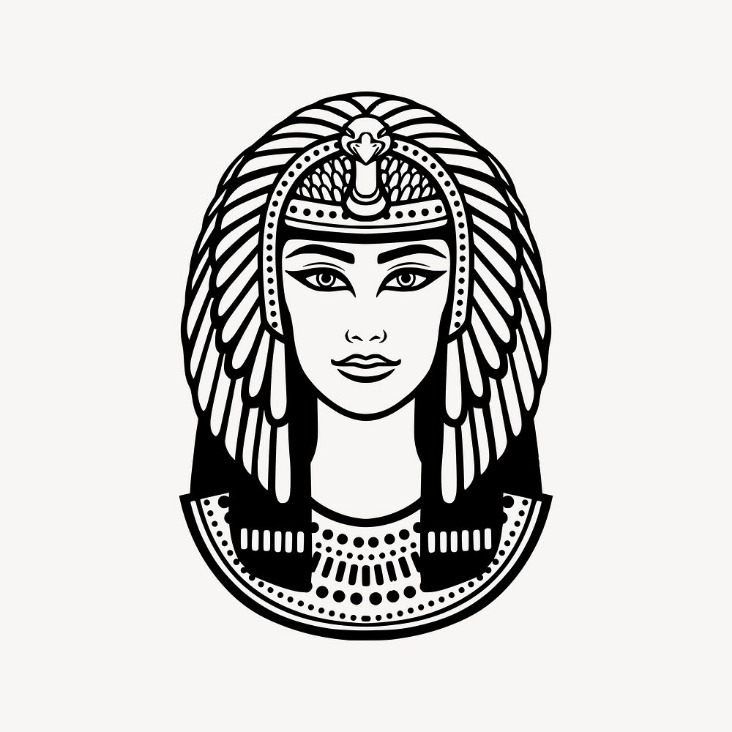Overview of Hieroglyphics
Hieroglyphics is the ancient writing system of Egypt, composed of intricate symbols and pictures that represent sounds, words, and ideas. Used primarily in religious texts, inscriptions, and monumental art, hieroglyphics played a vital role in documenting and conveying the rich history and culture of ancient Egypt. This complex script reflects the civilization’s advanced skills in art, language, and communication, providing a window into their beliefs, daily life, and achievements.
Definition and Significance
Hieroglyphics is a complex system of picture symbols used as a writing script in ancient Egypt. It combines logographic and alphabetic elements to represent words, sounds, and ideas, serving as a vital means of communication in Egyptian society.
These symbols, often carved into stone or painted on monuments, played a crucial role in recording religious texts, royal decrees, and historical events. The intricate nature of hieroglyphics reflects the richness of Egyptian culture and their emphasis on spirituality, governance, and everyday life.
The significance of hieroglyphics extends beyond mere communication; it was considered sacred and linked to divine power. Understanding this script provides valuable insights into ancient Egyptian civilization, their beliefs, social structure, and achievements, making it an essential aspect of Egyptological studies.
Historical Development
Hieroglyphics is the ancient Egyptian writing system that employed intricate symbols and pictures to represent words, sounds, and concepts. It was a crucial form of communication used mainly for religious texts, inscriptions on monuments, and official inscriptions.
The development of hieroglyphics began around 3300 BCE during the early periods of ancient Egypt. It evolved from earlier proto-writing systems and gradually became more standardized over time. The script was primarily pictographic, with symbols depicting objects, animals, and beings that conveyed specific meanings.
Throughout the centuries, hieroglyphics saw significant changes and refinements. During the Old Kingdom, it achieved a high degree of complexity and artistic detail. The script was mainly used for monumental inscriptions and was often accompanied by a cursive form called hieratic, which was used for religious and administrative documents on papyrus. Later, a more simplified script called demotic emerged, which was used for everyday writing, and hieroglyphics eventually fell out of general use with the rise of other scripts like Greek and Coptic.
- Early hieroglyphics appeared around 3300 BCE in the form of pictorial symbols.
- The script was mainly used for monumental and religious texts, such as tomb inscriptions and temple carvings.
- Hieroglyphic writing was complemented by cursive forms like hieratic and demotic for daily use.
- The development of hieroglyphics reflects Egypt’s complex religious beliefs and societal structure.
- The discovery of the Rosetta Stone in 1799 greatly contributed to deciphering hieroglyphics by providing translations in Greek.
The Writing System of Ancient Egypt
The writing system of ancient Egypt is one of the most remarkable and enduring heritages of human civilization. Known as hieroglyphics, this complex system combined logographic and alphabetic elements, allowing Egyptians to record their history, religion, and daily life with intricate symbol forms. Hieroglyphics played a vital role in maintaining the cultural identity and spiritual beliefs of ancient Egypt, offering a window into a civilization renowned for its artistic and intellectual achievements.
Components of Hieroglyphics
The writing system of ancient Egypt, known as hieroglyphics, is a complex and sophisticated system used for religious texts, official inscriptions, and monumental art. It combines logographic, syllabic, and alphabetic elements to convey meanings and sounds, making it a versatile form of writing employed over thousands of years.
Hieroglyphics consist of various components, including ideograms, which represent ideas or objects; phonograms, which depict sounds and are used to spell out words phonetically; and determinatives, which provide context or clarification for the words associated with them. These components work together to create a detailed and expressive writing system that communicated religious beliefs, governance, and cultural stories of ancient Egypt.
Types of Hieroglyphs
The writing system of ancient Egypt, known as hieroglyphs, was a sophisticated and symbolic method of communication used for religious, administrative, and monumental purposes. Hieroglyphs combine logographic and alphabetic elements, allowing for detailed and expressive writing. They often appeared on temple walls, tombs, and papyrus scrolls, illustrating stories, rituals, and official decrees.
Hieroglyphic writing consisted of several types of symbols, each serving a different function. The main types include:
- Ideograms: These symbols represent entire words or ideas. For example, a picture of a sun might represent the concept of “day” or “sun.”
- Phonograms: These symbols stand for sounds or syllables, helping to spell out words phonetically. They often resemble objects whose names share similar sounds.
- Determinatives: These symbols are used at the end of words to clarify their meaning or category, such as indicating that a word pertains to a person, place, or object.
Hieroglyphs were written in rows or columns and could be read from left to right or right to left, depending on the direction the characters faced. This writing system remained in use for over three thousand years, reflecting the rich cultural and religious history of ancient Egypt.
Materials and Techniques
Materials and techniques play a crucial role in understanding the art and inscriptions of ancient Egypt, especially in the context of hieroglyphics. The ancient Egyptians employed a variety of mediums, such as stone, papyrus, and plaster, to create their detailed and durable hieroglyphic texts. Skilled artisans used specialized tools and methods to carve, paint, and inscribe symbols that conveyed religious, administrative, and cultural messages. Exploring these materials and techniques provides valuable insight into the craftsmanship and technological advances of ancient Egyptian civilization.
Ink and Pigments
Ancient Egyptian hieroglyphics utilized a rich palette of inks and pigments to create their intricate inscriptions and artwork. The primary materials included carbon-based black ink derived from soot or charred organic materials, which was used for outlines and text. Bright colors were achieved through the use of mineral pigments such as red ochre, yellow ochre, malachite for green, azurite for blue, and Egyptian blue, a synthetic pigment unique to Egyptian technology. These pigments were often ground into fine powders and mixed with a binding medium like gum arabic or resin to create durable inks and paints. The meticulous application of these materials on papyrus, limestone, or wood surfaces involved techniques that ensured longevity, with some pigments remaining vivid thousands of years later. The combination of these materials and techniques reflects the Egyptians’ mastery in both artistic expression and the preservation of their cultural and religious symbols.”
Tools and Surfaces
Materials and techniques used in ancient Egyptian hieroglyphics were carefully selected to ensure durability and clarity. Natural pigments derived from minerals such as malachite for green, azurite for blue, ochre for yellow and red, and charcoal for black were commonly used to create vibrant and long-lasting colors. These pigments were mixed with organic binders like gum Arabic to adhere to surfaces. Carving hieroglyphs involved carving into stone surfaces, primarily limestone and sandstone, with copper or bronze chisels, achieving precise and detailed inscriptions. Additionally, painting was performed on papyrus, plastered walls, and carved stone surfaces to render hieroglyphics vividly. Tools such as brushes made from reeds or animal hair facilitated application of pigments, while metal tools were employed for inscribing into stone. The surfaces most commonly used for hieroglyphic inscriptions included limestone limestone walls of temples and tombs, papyrus scrolls, and wooden artifacts, all of which contributed to the preservation of this intricate writing system for thousands of years.
Deciphering Hieroglyphics
Deciphering hieroglyphics offers a fascinating window into the ancient civilization of Egypt, revealing their history, culture, and beliefs. These intricate symbols, developed thousands of years ago, served as a complex writing system used for monumental inscriptions, religious texts, and official records. Understanding hieroglyphics allows us to unlock the stories of pharaohs, gods, and everyday life in ancient Egypt, providing invaluable insights into one of the world’s most intriguing civilizations.
Rosetta Stone and Its Role
Deciphering hieroglyphics has been a crucial step in understanding the rich history of ancient Egypt. These intricate symbols provided a window into Egypt’s culture, religion, and daily life. The breakthrough came with the discovery of the Rosetta Stone, a granodiorite stele inscribed with the same text in three scripts: Greek, Demotic, and hieroglyphic. This multilingual artifact allowed scholars to compare the known Greek language with the hieroglyphic script, ultimately unlocking their meanings. The decipherment of hieroglyphics via the Rosetta Stone revolutionized Egyptology, enabling researchers to translate vast amounts of Egyptian texts and deepen their knowledge of ancient Egyptian civilization. As a vital tool in linguistic history, the Rosetta Stone also underscored the importance of comparative linguistics in uncovering lost languages and understanding human history. Its role in translating hieroglyphics has made it one of the most significant archaeological discoveries, providing a foundation for modern studies of ancient Egypt’s language, culture, and history.
Key Figures in Decipherment
Deciphering hieroglyphics, the complex writing system of ancient Egypt, has been a significant achievement in understanding Egyptian civilization. Key figures in the decipherment played crucial roles in unlocking the language and culture encoded within these symbols.
- Jean-François Champollion: Often regarded as the father of Egyptology, he achieved the first successful translation of hieroglyphics in 1822. His work was based on the Rosetta Stone, which contained the same text in Greek, Demotic, and hieroglyphics.
- Thomas Young: An English scholar who made important contributions to understanding hieroglyphic signs and identified the cartouches that contained royal names. His preliminary efforts laid the groundwork for later breakthroughs.
- Jean-Baptiste Champollion: The younger brother of Jean-François, he continued and refined his brother’s work, ultimately deciphering the phonetic aspects of hieroglyphics and establishing the principles of hieroglyphic reading.
- Christian Jacobsen Thomsen: A Danish archaeologist who contributed to early studies of Egyptian language and scripts, aiding the broader understanding necessary for decipherment.
Examples of Hieroglyphic Inscriptions
Ancient Egypt is renowned for its rich and intricate writing system known as hieroglyphics, which combined logographic and alphabetic elements. Examples of hieroglyphic inscriptions can be found adorning temple walls, tombs, and monuments, offering valuable insights into Egyptian religion, royal lineage, and daily life. These inscriptions served both decorative and functional purposes, capturing the beliefs and achievements of one of history’s most fascinating civilizations.
Tomb Walls and Cartouches
Ancient Egypt is renowned for its rich and intricate use of hieroglyphic inscriptions that decorate temples, tombs, and monuments. Examples of these inscriptions include detailed scenes on tomb walls depicting the deceased’s journey to the afterlife, with hieroglyphic texts providing names, titles, and prayers. Tomb walls often feature scenes of offerings, gods, and daily life, all adorned with hieroglyphic labels that offer insights into the individual’s status and beliefs. Cartouches, which are oval-shaped hieroglyphic symbols, frequently enclose the names of pharaohs and royalty, serving as a form of royal signature or protection. These inscriptions played an essential role in religious and ceremonial contexts, ensuring the proper passage of the soul and immortalization of the individual’s name in the afterlife.
Temple Texts and Reliefs
Ancient Egypt is renowned for its rich tradition of hieroglyphic inscriptions, which served as a primary means of recording history, religion, and culture. Examples of hieroglyphic inscriptions include royal cartouches bearing the names of pharaohs, which are often found on monuments and tombs to ensure their everlasting remembrance. Temple texts, such as the Pyramid Texts and the Coffin Texts, provide detailed religious instructions, spells, and prayers intended to guide the deceased in the afterlife. Reliefs carved into temple walls depict scenes of gods, daily life, and mythological narratives, offering insight into Egyptian beliefs and societal structure. Notable examples include the inscriptions at Karnak Temple, Luxor Temple, and the tomb of Tutankhamun, all of which showcase elaborate hieroglyphic artistry that combines text and imagery to convey complex religious and historical messages.
Cultural and Religious Significance
Ancient Egypt holds a profound cultural and religious significance that is vividly reflected through its hieroglyphic writing system. These sacred symbols served not only as a means of communication but also as a reflection of the spiritual beliefs, rituals, and societal values of the ancient Egyptians. Understanding hieroglyphics offers a glimpse into their rich mythology, divine reverence, and the importance they placed on the afterlife and sacred traditions.
Hieroglyphics in Rituals
In ancient Egypt, hieroglyphics held profound cultural and religious significance, serving as a vital means of communication with the divine and ensuring the continuation of spiritual beliefs. These intricate symbols were believed to possess magical qualities, acting as a bridge between the mortal world and the gods. Hieroglyphics were not only used in everyday writing but also played a central role in religious rituals and ceremonies, emphasizing their sacred nature.
- Hieroglyphics were often inscribed on tomb walls, temples, and sacred objects to invoke blessings from gods and protect the deceased in the afterlife.
- They were employed in funerary texts, such as the Book of the Dead, which guided souls through the afterlife and ensured their saints’ favor.
- Hieroglyphic inscriptions in temples conveyed religious myths, divine statutes, and hymns, reinforcing the connection between the worshippers and the divine realm.
- Religious rituals often involved the recitation of hieroglyphic texts to authenticate offerings and invoke spiritual power.
- The precise and sacred nature of hieroglyphics underscored their importance in maintaining cosmic order and religious sovereignty of the Pharaohs.
Symbolism and Meaning
Ancient Egyptian hieroglyphics hold profound cultural and religious significance, serving as a sacred language used in monumental inscriptions, tombs, and temples. These symbols encapsulate the spiritual beliefs and worldview of the ancient Egyptians, often representing deities, concepts of the afterlife, and divine power. Hieroglyphics were more than mere writing; they were a form of symbolism imbued with meaning, believed to invoke protection, blessing, or divine presence in their inscriptions.
Many hieroglyphs carry deep symbolic meanings, with specific signs representing gods, natural elements, or moral virtues. For example, the Ankh symbol signifies eternal life, while the Scarab beetle symbolizes rebirth and transformation. These symbols conveyed complex religious messages and reinforced the divine authority of pharaohs and priests, reflecting a worldview that intertwined life, death, and the divine in a cohesive spiritual framework.
Overall, hieroglyphics in ancient Egypt served as a bridge between the mortal and divine realms, encoding sacred stories, religious rituals, and philosophical concepts. Their intricate symbolism and meaningful representations reveal the ancient Egyptians’ reverence for eternity, spiritual harmony, and their deeply rooted cultural identity.
Legacy and Modern Study
The study of ancient Egypt through hieroglyphics bridges the gap between legacy and modern understanding, revealing the richness of one of history’s most fascinating civilizations. Legacy study focuses on the traditional methods, deciphering symbols and inscriptions passed down through generations, while modern approaches utilize advanced technology and research techniques for deeper insights. Together, these perspectives illuminate the cultural, religious, and historical significance of ancient Egypt, offering a comprehensive view of its enduring legacy.
Preservation and Restoration
Ancient Egypt’s rich history is extensively studied through both legacy and modern methods, particularly in the field of hieroglyphics. The legacy of traditional archaeology emphasizes careful preservation of artifacts and detailed manual analysis of hieroglyphic inscriptions to understand the culture, religion, and societal structure of ancient Egypt. Modern study, on the other hand, incorporates advanced technologies such as digital imaging, 3D scanning, and computational linguistics to decode and interpret hieroglyphics more efficiently and accurately. Preservation efforts focus on safeguarding monuments, papyri, and sculptures from environmental damage, ensuring that future generations can access these invaluable insights. Restoration initiatives aim to repair and consolidate deteriorated structures, balancing the necessity to maintain authenticity with the goal of making ancient inscriptions legible and comprehensible. Together, these approaches allow scholars to deepen their understanding of Egypt’s past, preserving its cultural heritage through a blend of traditional appreciation and innovative techniques.
Modern Technologies and Digital Reconstruction
The study of ancient Egypt in hieroglyphics has evolved significantly from traditional methods to modern technological approaches, allowing for deeper insights into this civilization’s history. Legacy research involved meticulous manual deciphering of hieroglyphs, often limited by the availability of knowledge and resources. Today, modern technologies such as high-resolution imaging, 3D scanning, and digital databases enable scholars to analyze inscriptions with unprecedented precision and detail. These tools facilitate the preservation and dissemination of hieroglyphic texts, making it easier to uncover the meanings and cultural context behind the symbols.
Recent advances in digital reconstruction have transformed the way ancient Egyptian monuments and artifacts are studied and preserved. Digital models of temples, tombs, and artifacts can be created through photogrammetry and laser scanning, providing immersive experiences and detailed virtual representations. These reconstructions allow researchers and the public to explore iconic sites like the Pyramids of Giza or the tombs in the Valley of the Kings without physical wear and tear on the originals. The integration of modern technologies continues to deepen understanding of hieroglyphic inscriptions and Egypt’s rich cultural legacy, bridging the gap between the past and present.





0 Comments